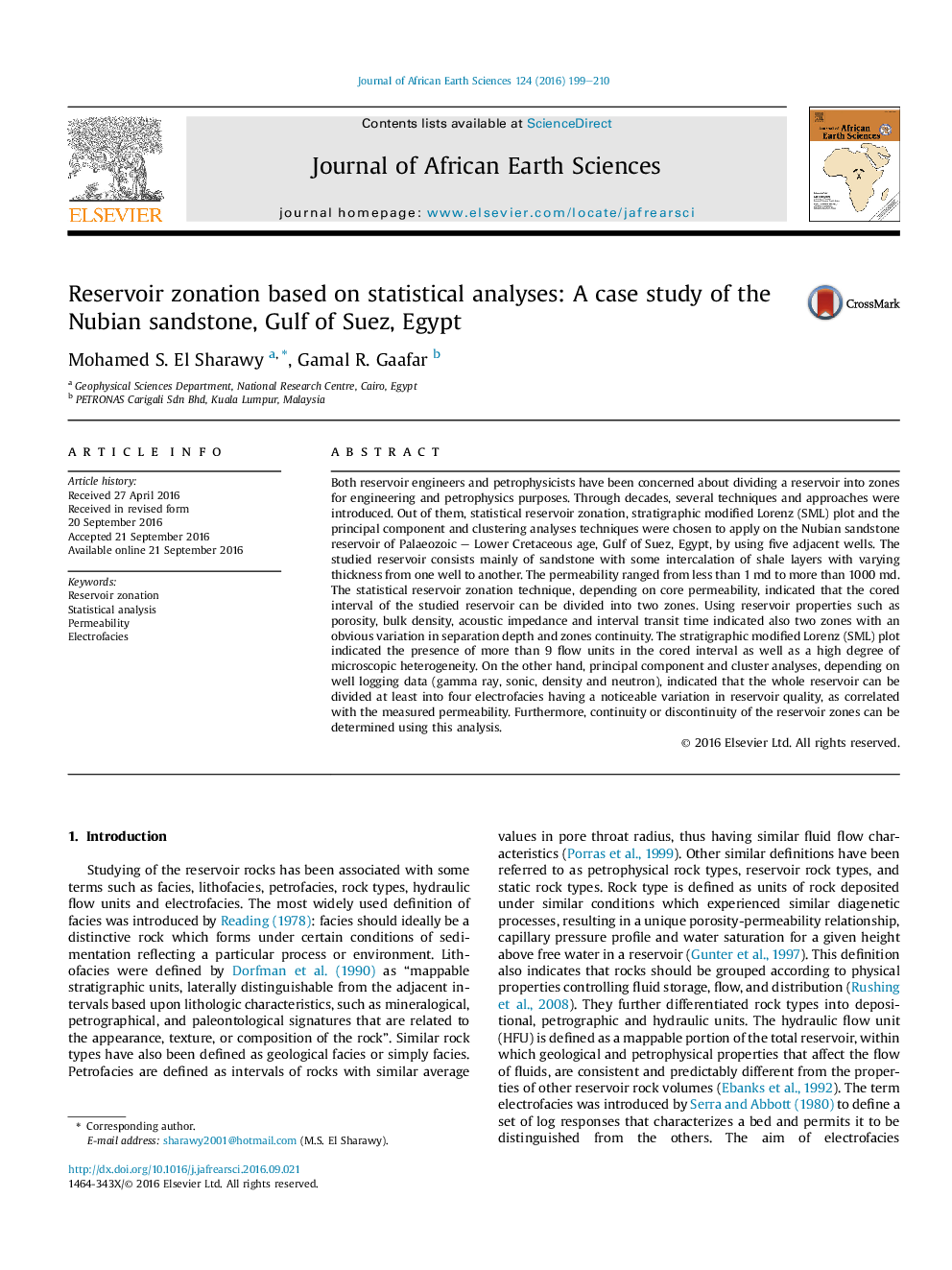| کد مقاله | کد نشریه | سال انتشار | مقاله انگلیسی | نسخه تمام متن |
|---|---|---|---|---|
| 4728142 | 1640184 | 2016 | 12 صفحه PDF | دانلود رایگان |
• Permeability and other reservoir properties can be used to reservoir zonation.
• Division of the reservoir into zones can be coincided with geological unconformity.
• Cluster analysis gives more details about the reservoir rock properties.
Both reservoir engineers and petrophysicists have been concerned about dividing a reservoir into zones for engineering and petrophysics purposes. Through decades, several techniques and approaches were introduced. Out of them, statistical reservoir zonation, stratigraphic modified Lorenz (SML) plot and the principal component and clustering analyses techniques were chosen to apply on the Nubian sandstone reservoir of Palaeozoic – Lower Cretaceous age, Gulf of Suez, Egypt, by using five adjacent wells. The studied reservoir consists mainly of sandstone with some intercalation of shale layers with varying thickness from one well to another. The permeability ranged from less than 1 md to more than 1000 md. The statistical reservoir zonation technique, depending on core permeability, indicated that the cored interval of the studied reservoir can be divided into two zones. Using reservoir properties such as porosity, bulk density, acoustic impedance and interval transit time indicated also two zones with an obvious variation in separation depth and zones continuity. The stratigraphic modified Lorenz (SML) plot indicated the presence of more than 9 flow units in the cored interval as well as a high degree of microscopic heterogeneity. On the other hand, principal component and cluster analyses, depending on well logging data (gamma ray, sonic, density and neutron), indicated that the whole reservoir can be divided at least into four electrofacies having a noticeable variation in reservoir quality, as correlated with the measured permeability. Furthermore, continuity or discontinuity of the reservoir zones can be determined using this analysis.
Journal: Journal of African Earth Sciences - Volume 124, December 2016, Pages 199–210
